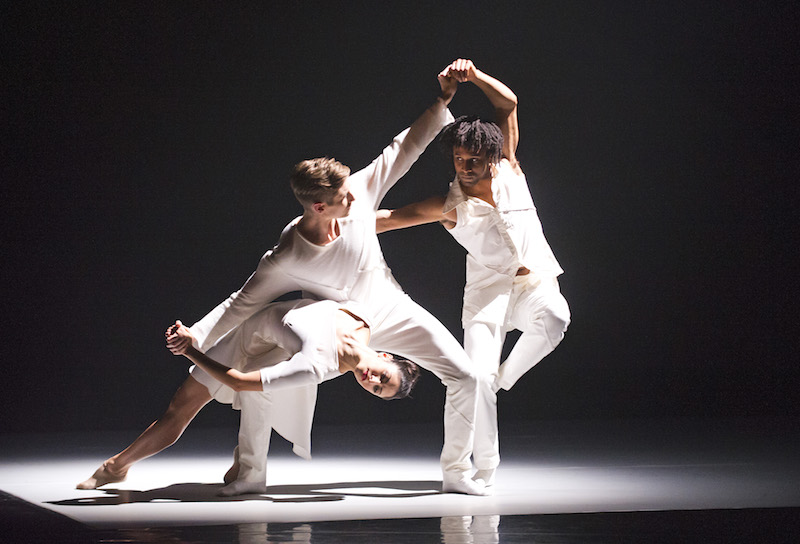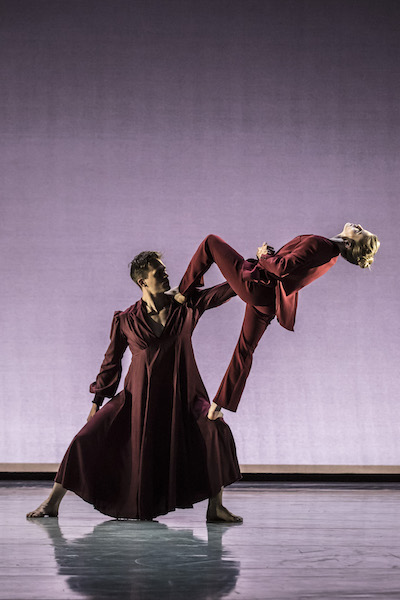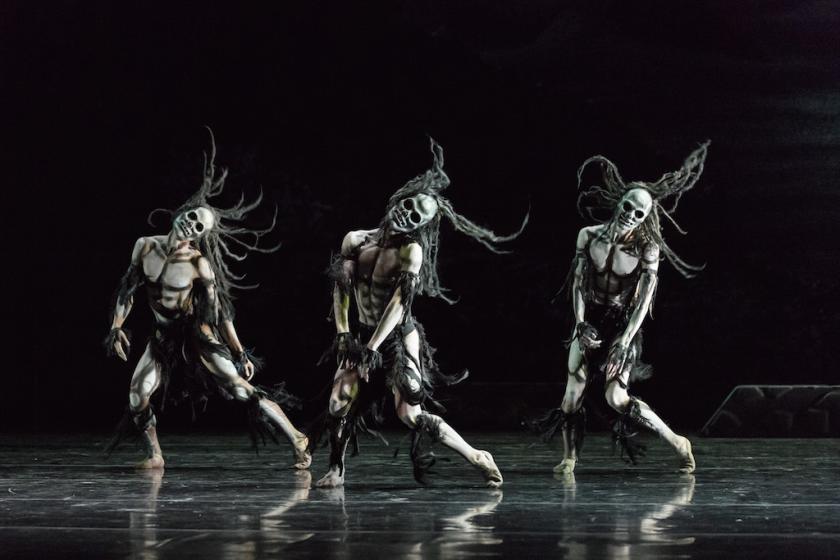There is a South American theme to Rambert’s latest triple bill, two new commissions made to chime with an oldie but goldie, the rhythms of Latin social dances linking all three.
Ghost Dances is, I'm told, the most requested work in the company’s 90-year history, but it must have made a very different impression on its first airing. It was made in 1981 at the prompting of the Chilean Human Rights Committee, determined that the world should know about the 35,000 people murdered, and many more imprisoned and tortured, in the wake of General Pinochet’s bloody coup. Christopher Bruce, moved by personal contact with the widow of the singer and poet Victor Jara, choreographed Ghost Dances in response.
Out of its historic context, it’s a work of quaint folk dances and catchy tunes
The absence of music for the first eight minutes or so (in its place is the sound of desolate, blustering wind) should alert us to serious intent. Yet it’s too easy, now, to view the body-painted “ghosts” with their ghoulish skeleton masks and flying dreadlocks as Halloween-style entertainment, and the troupe of dazed rustic Chileans who later fill the stage as happy village folk, not “the dead”.
While it can’t be denied that politically imposed suffering continues around the world, the Andean folk music and striking imagery of this piece make the original message non-transferable. Out of its historic context, it’s a work of quaint folk dances and catchy tunes played on the Andean flute, the sort of music once hawked in British shopping centres on Saturday afternoons. Call me cynical, but I felt the cheers that greeted Ghost Dances at Sadler’s Wells on Tuesday night related more to its touristic appeal than anything more troubling.
 Didy Veldman’s The 3 Dancers (pictured above) is equally specific in its references. It takes its title from a 1925 Picasso painting whose linked figures were inspired by the memory of a fraught love triangle which ended in the suicide of the artist’s rival. Veldman’s choreography for two trios of dancers meticulously unpacks the human story in fluid tussles of domination and appeasement, and for a remarkably long time each dancer is gripped by the hand by the other two, unable to break free.
Didy Veldman’s The 3 Dancers (pictured above) is equally specific in its references. It takes its title from a 1925 Picasso painting whose linked figures were inspired by the memory of a fraught love triangle which ended in the suicide of the artist’s rival. Veldman’s choreography for two trios of dancers meticulously unpacks the human story in fluid tussles of domination and appeasement, and for a remarkably long time each dancer is gripped by the hand by the other two, unable to break free.
Appropriately for a dance about a Cubist painting, design (Kimie Nakano) plays an active part: at key moments a giant triangle descends from the ceiling like a glittering shard of glass and lodges its point on the floor. Once or twice a dancer narrowly avoids being skewered. But the piece hardly needs additional thrills given the helter-skelter ride of Elena Kats-Chernin’s tango-driven score – a terrific piece that could have a life of its own in the concert hall if played with the panache that Rambert’s own band achieve under the baton of Paul Hoskins.
There are yet more Latin dance rhythms in Aletta Collins’ The days run away like wild horses. It's inspired by an 1980s animation film in which 36 characters appear together in one small room, moving in loops that never intersect.
 Collins’ typically playful take on it resembles a game of Spot the Difference: is the boy retrieving the ball kicked through the window bouncing it in exactly the same spot each time? The amorous couple who repeatedly get up from the bed and depart through the door… is that really the same couple each time? The woman packing and unpacking her shopping, the mother placing her baby in its cot, the jogger, the child flying a paper plane, the janitor with his bucket… you struggle to identify where each loop of activity begins and marvel at the technical efficiency that keeps these characters in perpetual motion. It’s laugh-out-loud funny – a rarity in dance – and Arturo Marquez’s quirky Latin music keeps the pot bubbling.
Collins’ typically playful take on it resembles a game of Spot the Difference: is the boy retrieving the ball kicked through the window bouncing it in exactly the same spot each time? The amorous couple who repeatedly get up from the bed and depart through the door… is that really the same couple each time? The woman packing and unpacking her shopping, the mother placing her baby in its cot, the jogger, the child flying a paper plane, the janitor with his bucket… you struggle to identify where each loop of activity begins and marvel at the technical efficiency that keeps these characters in perpetual motion. It’s laugh-out-loud funny – a rarity in dance – and Arturo Marquez’s quirky Latin music keeps the pot bubbling.
Even when a middle section appears to get serious (pictured above right) there’s an embedded cross-dressing joke. A woman in a three-piece suit uses her man as a stepladder; a man in a dress appears to turn his body inside out, the skirt sheathing him like petals. The choreographer also has fun with long diagonals and chain reactions: always satisfying writ large on a big stage.
The dancing – as one has come to expect from this truly diverse and enterprising company – is vital and joyfully precise. In short, the feelgood factor has rarely been higher. One day soon perhaps Rambert will find a choreographer willing and able to engage with current dire world issues as Christopher Bruce did in the Eighties. There is need indeed.














Add comment